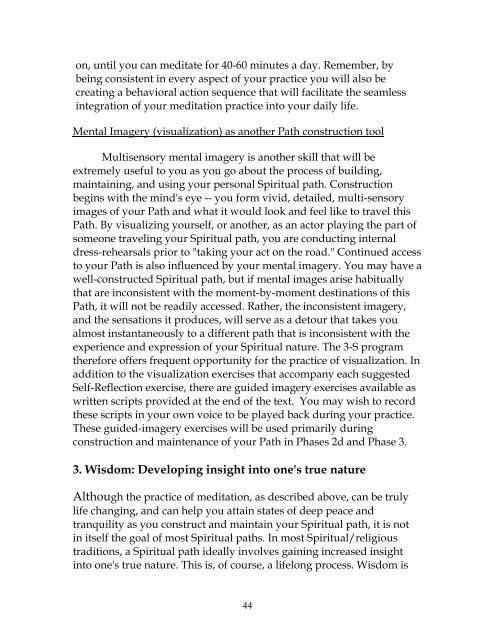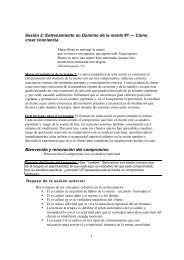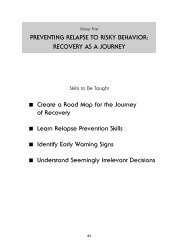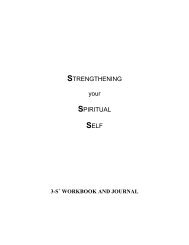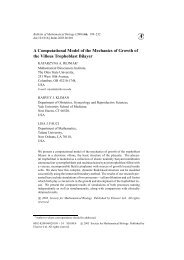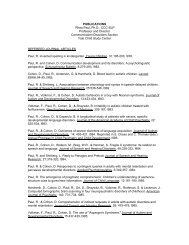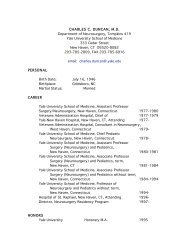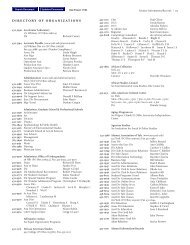The Spiritual Self Schema (3-S) Development Program
The Spiritual Self Schema (3-S) Development Program
The Spiritual Self Schema (3-S) Development Program
You also want an ePaper? Increase the reach of your titles
YUMPU automatically turns print PDFs into web optimized ePapers that Google loves.
on, until you can meditate for 40-60 minutes a day. Remember, by<br />
being consistent in every aspect of your practice you will also be<br />
creating a behavioral action sequence that will facilitate the seamless<br />
integration of your meditation practice into your daily life.<br />
Mental Imagery (visualization) as another Path construction tool<br />
Multisensory mental imagery is another skill that will be<br />
extremely useful to you as you go about the process of building,<br />
maintaining, and using your personal <strong>Spiritual</strong> path. Construction<br />
begins with the mind's eye -- you form vivid, detailed, multi-sensory<br />
images of your Path and what it would look and feel like to travel this<br />
Path. By visualizing yourself, or another, as an actor playing the part of<br />
someone traveling your <strong>Spiritual</strong> path, you are conducting internal<br />
dress-rehearsals prior to "taking your act on the road." Continued access<br />
to your Path is also influenced by your mental imagery. You may have a<br />
well-constructed <strong>Spiritual</strong> path, but if mental images arise habitually<br />
that are inconsistent with the moment-by-moment destinations of this<br />
Path, it will not be readily accessed. Rather, the inconsistent imagery,<br />
and the sensations it produces, will serve as a detour that takes you<br />
almost instantaneously to a different path that is inconsistent with the<br />
experience and expression of your <strong>Spiritual</strong> nature. <strong>The</strong> 3-S program<br />
therefore offers frequent opportunity for the practice of visualization. In<br />
addition to the visualization exercises that accompany each suggested<br />
<strong>Self</strong>-Reflection exercise, there are guided imagery exercises available as<br />
written scripts provided at the end of the text. You may wish to record<br />
these scripts in your own voice to be played back during your practice.<br />
<strong>The</strong>se guided-imagery exercises will be used primarily during<br />
construction and maintenance of your Path in Phases 2d and Phase 3.<br />
3. Wisdom: Developing insight into one's true nature<br />
Although the practice of meditation, as described above, can be truly<br />
life changing, and can help you attain states of deep peace and<br />
tranquility as you construct and maintain your <strong>Spiritual</strong> path, it is not<br />
in itself the goal of most <strong>Spiritual</strong> paths. In most <strong>Spiritual</strong>/religious<br />
traditions, a <strong>Spiritual</strong> path ideally involves gaining increased insight<br />
into one's true nature. This is, of course, a lifelong process. Wisdom is<br />
44


